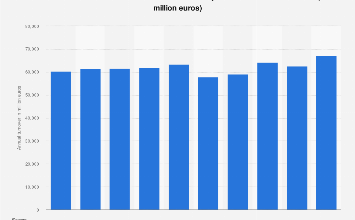Telecommunication
Telecommunications: Driving Sustainable and Inclusive growth in India

The telecommunications sector in India has not merely evolved; it has undergone a profound transformation, becoming a cornerstone of the nation’s journey towards sustainable development. From its humble beginnings with basic voice services to massive strides in 4G, to the current 5G era, telecommunications has been instrumental in shaping India’s digital landscape and fostering inclusive growth.
As we celebrate World Telecommunications Day, it’s a fitting moment to reflect on telecom’s crucial role in enabling socio-economic progress across the nation. The sector has served as a bridge, connecting rural areas to urban centres and empowered millions with access to vital services like information, education, healthcare, and economic opportunities. Studies indicate that a 10 percent increase in mobile connectivity can boost a country’s GDP by 0.8 percent, highlighting the impact of telecommunications on economic development.
The recent launch of 5G services and its rapid deployment in India exemplify the nation’s commitment to staying at the forefront of the global telecommunications industry. With over 170 million users within 18 months, India’s 5G rollout is not only impressive but also sets the stage for transformative changes in various sectors. 5G will be instrumental in achieving India’s digital inclusion goals, particularly in bringing broadband connectivity to rural and remote areas. Connectivity based on 4G/5G services is serving as the foundation of the Government’s “Digital India” vision and enabling the digitalization of all essential public services.
The potential of 5G to revolutionize industries is immense. From smart cities and autonomous vehicles to remote healthcare and augmented reality, 5G-enabled innovations are poised to reshape the way we live, work, and interact. For instance, in agriculture, 5G-enabled smart farming techniques can enhance crop yields, minimize environmental impact, and ensure sustainable food production. IoT devices powered by 5G optimize resource usage and monitor crop health in real-time, contributing to a more sustainable agricultural ecosystem.
Similarly, in healthcare, 5G facilitates telemedicine and remote patient monitoring, reducing the need for physical travel and minimizing carbon emissions associated with healthcare services. AI-driven diagnostics further optimize medical resource allocation, leading to reduced unnecessary procedures and carbon emissions.
In education, 5G-driven technologies such as augmented reality (AR) and virtual reality (VR) offer immersive learning experiences and enable remote access to educational content, thus contributing to a more sustainable and inclusive educational ecosystem.
Moreover, 5G-enabled manufacturing processes enable industries to minimize waste, streamline supply chains, and achieve higher levels of automation, fostering a more sustainable and agile manufacturing ecosystem.
In addition to the transformative potential of 5G, it’s essential to recognize the pivotal role that existing digital innovations have played in shaping India’s sustainable development journey. A prime example of this is the Unified Payments Interface (UPI), which has emerged as a game-changer in the space of digital payments. The success of UPI in India is a testament to what is possible with connectivity. UPI has been the major driving force in the overall growth of digital payment transactions in the country, accounting for a staggering 62% of digital payment transactions in the fiscal year 2022-23. This remarkable achievement underscores the power of telecom in democratizing access to financial services, fostering financial inclusion, and driving the transition towards a less cash-dependent economy.
Looking ahead, the convergence of AI and 5G is poised to redefine the telecom landscape, ushering in an era of hyper-connectivity and intelligent networks. As we embrace these new technologies, we must ensure that they not only enhance our lives but also create new opportunities for growth and development.
From connecting communities and powering businesses to fostering innovation and empowering individuals, telecom serves as a catalyst for positive change. And collectively, it is incumbent upon us to continue innovating, collaborating, and investing in building the digital infrastructure of tomorrow, thereby ensuring that telecom remains a driving force for sustainable development. Let us seize the opportunities of the digital age to create a brighter, more inclusive future for all.
By: Nitin Bansal, Managing Director, India Head-Networks, Market Area South East Asia, Oceania and India, Ericsson
As we celebrate World Telecommunications Day, it’s a fitting moment to reflect on telecom’s crucial role in enabling socio-economic progress across the nation. The sector has served as a bridge, connecting rural areas to urban centres and empowered millions with access to vital services like information, education, healthcare, and economic opportunities. Studies indicate that a 10 percent increase in mobile connectivity can boost a country’s GDP by 0.8 percent, highlighting the impact of telecommunications on economic development.
The recent launch of 5G services and its rapid deployment in India exemplify the nation’s commitment to staying at the forefront of the global telecommunications industry. With over 170 million users within 18 months, India’s 5G rollout is not only impressive but also sets the stage for transformative changes in various sectors. 5G will be instrumental in achieving India’s digital inclusion goals, particularly in bringing broadband connectivity to rural and remote areas. Connectivity based on 4G/5G services is serving as the foundation of the Government’s “Digital India” vision and enabling the digitalization of all essential public services.
The potential of 5G to revolutionize industries is immense. From smart cities and autonomous vehicles to remote healthcare and augmented reality, 5G-enabled innovations are poised to reshape the way we live, work, and interact. For instance, in agriculture, 5G-enabled smart farming techniques can enhance crop yields, minimize environmental impact, and ensure sustainable food production. IoT devices powered by 5G optimize resource usage and monitor crop health in real-time, contributing to a more sustainable agricultural ecosystem.
Similarly, in healthcare, 5G facilitates telemedicine and remote patient monitoring, reducing the need for physical travel and minimizing carbon emissions associated with healthcare services. AI-driven diagnostics further optimize medical resource allocation, leading to reduced unnecessary procedures and carbon emissions.
In education, 5G-driven technologies such as augmented reality (AR) and virtual reality (VR) offer immersive learning experiences and enable remote access to educational content, thus contributing to a more sustainable and inclusive educational ecosystem.
Moreover, 5G-enabled manufacturing processes enable industries to minimize waste, streamline supply chains, and achieve higher levels of automation, fostering a more sustainable and agile manufacturing ecosystem.
In addition to the transformative potential of 5G, it’s essential to recognize the pivotal role that existing digital innovations have played in shaping India’s sustainable development journey. A prime example of this is the Unified Payments Interface (UPI), which has emerged as a game-changer in the space of digital payments. The success of UPI in India is a testament to what is possible with connectivity. UPI has been the major driving force in the overall growth of digital payment transactions in the country, accounting for a staggering 62% of digital payment transactions in the fiscal year 2022-23. This remarkable achievement underscores the power of telecom in democratizing access to financial services, fostering financial inclusion, and driving the transition towards a less cash-dependent economy.
Looking ahead, the convergence of AI and 5G is poised to redefine the telecom landscape, ushering in an era of hyper-connectivity and intelligent networks. As we embrace these new technologies, we must ensure that they not only enhance our lives but also create new opportunities for growth and development.
From connecting communities and powering businesses to fostering innovation and empowering individuals, telecom serves as a catalyst for positive change. And collectively, it is incumbent upon us to continue innovating, collaborating, and investing in building the digital infrastructure of tomorrow, thereby ensuring that telecom remains a driving force for sustainable development. Let us seize the opportunities of the digital age to create a brighter, more inclusive future for all.
By: Nitin Bansal, Managing Director, India Head-Networks, Market Area South East Asia, Oceania and India, Ericsson



